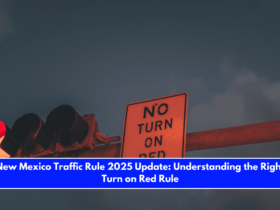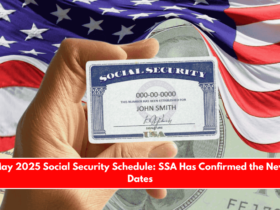The Social Security Administration (SSA) has shared its payment schedule for May 2025. Like always, the payments are being sent out on different Wednesdays based on when a person was born.
This system helps reduce delays and keeps the money flowing smoothly. However, some new concerns have come up — including job cuts at the SSA and possible changes in future benefits.
When Will You Get Your Social Security Payment in May 2025?
The SSA divides Social Security payments into three main groups based on birth dates:
- If your birthday falls between the 1st and 10th of any month, you would have received your payment on the second Wednesday, which was May 14, 2025.
- If your birthday is between the 11th and 20th, your money was sent on the third Wednesday, which was May 21, 2025.
- Finally, if your birthday is from the 21st to the 31st, your payment will arrive on the fourth Wednesday, which is May 28, 2025.
Special Payment Dates for Certain Beneficiaries
Some people always get their payments on the third day of the month — these are people who started receiving Social Security before May 1997. They also include those who get both Social Security retirement and Supplemental Security Income (SSI).
Here’s the important part: SSI is paid on the 1st of every month, but since June 1st, 2025, falls on a Saturday, that payment will arrive early — on May 30, 2025. Retirement payments will still be sent on June 3, 2025, as usual.
Could Social Security Benefits Be Cut?
There’s growing concern that future Social Security benefits could be reduced. The Congressional Budget Office (CBO) has suggested a major change — replacing the current system with fixed payments: $1,660 per month for individuals and $2,250 for couples.
While this could save the government around $607 billion over 10 years, it would reduce benefits for about 75% of current recipients. The goal is to make the system more financially stable, but it wouldn’t solve the full $22.6 trillion deficit expected in the future.
Other ideas being discussed include raising the retirement age, changing inflation calculations, or increasing taxes, but none of these fully fix the issue either.

What Do Experts Say About These Changes?
Some experts think fixed payments would make the system easier to manage. Others are worried it would hurt low-income retirees the most. These people depend on regular cost-of-living increases to keep up with inflation. If those adjustments disappear, their monthly budget could get tighter.
Right now, there’s no official law passed to make this change. It’s just a proposal, and whether it moves forward depends on how lawmakers respond in the coming months.
SSA Job Cuts and Service Delays
The SSA is also planning to cut 7,000 jobs — about 12% of its workforce — by the end of 2025. This could make it harder for people to get help with their benefits. Local offices are already reporting up to 58% staff shortages, which has caused long wait times both on phone calls and in-person visits.
With fewer staff, the SSA is trying to rely more on automated services and online systems, but these are not always helpful in rural areas or for older people who aren’t tech-savvy.
Public service experts are warning that these job cuts might make it harder for people to get timely support from the SSA in the future.











Leave a Reply